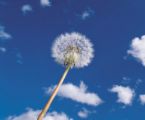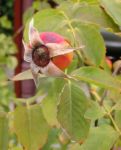|
Identify Healing Plants
How do we identify healing plants to find out if the plant growing on the back fence is poison oak or beautiful morning glory? Which is the healer? The plant could be a healing herb but how do you know? Learning how to identify healing plants to see if they are harmful or healthy can be helpful especially when the plants are growing in your yard and a person in the house has allergic reactions. Many of the weeds and wild plants in our yards and forest are beneficial for healing. Others are edible and can supplement a meal while some are poisonous and should be avoided. It is better to know beforehand which plants are harmful to some people so we can avoid allergic reactions. Flowing the instructions below may keep a family member from inquiring poison oak or ivy.
Learn about Dandelions below !Read about a Dandelions that Heal !
Items needed to Identify Healing Plants Gloves, Scissors, Paper bag, access to the Web or Library 1. Locate the plant that you want to identify. Put on gloves before handling the plant. If you do not have gloves with you then a piece of paperor material will work to pick up a leaf of the plant. 2. Using scissors cut off a piece of the end of one branch of the plant so you have a couple of leaves and part of the stem. If the plant has flowers, take one flower. 3. Place the trimmings in the paper bag or container to carry home or to the library. 4. Go online and look up plants for the area of the country you are in. It is very important to do this because plants change and adapt for different locations. The plant may not look the same as it does in another area. 5. Spread your trimming out on a piece of paper and look closely at the leaves. Take note of the veins, shape and size of each leaf. Also pay attention to how the leaf is attached to the stem and if the stem is round, square, smooth or rough. Another clue is if the plant is a shade loving or sun loving plant. Every bit of information can be helpful, like is the whole plant a bush or a single stalk plant. All of these notes will assist you in deciding which plant you have. 6. Compare the plant trimmings and notes with examples you find online or in plant books. Always double check another description or example to make sure you have the right identity for the plant. 7. Another excellence place to learn about plants that are native to your area is the county extension office that often has flyers and handouts about local plants. 8. Never use a plant that you are unsure of for healing or eating. Always double check to make sure the plant is identified correctly.
Like learning to Identify Healing Plants ?Click Below to read more Herbal Articles !Identify Healing Plants and Much More..Click Here Click Below to read about Natural IodineClick to read about Natural Iodine !
 Custom Search
|
Thanks for Stopping By


Photo credit: If this is yours, let me know.
I would love to give you credit for this very cool graphic.
Thanks.
Family Disaster Dog Foundation
Train your Family Dog to come to your aid during a disaster.
One of our biggest fears and chores during a disaster is losing or finding a loved one and every dog has the ability to find its family members or friends.
Family Disaster Dog Foundation teaches you how your dog can be your family's very own Search and Rescue Dog.
Free non-profit service.
Family Disaster Dog Foundation
Amber's Kindle Books
A Squirrel Planted an Acorn
Dog Owner Tips
Three Decades of Dogs Book 1
Click to Avenue to Alternatives BLOG

















